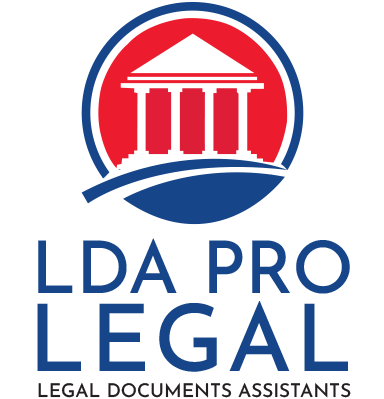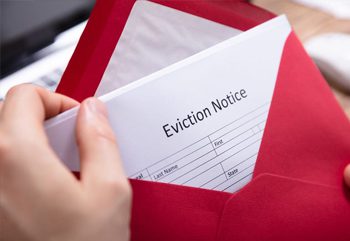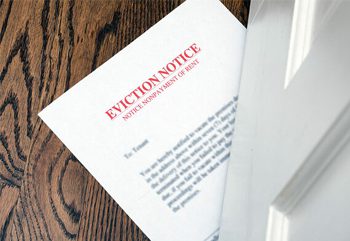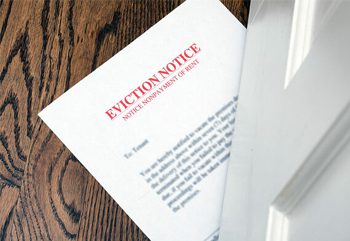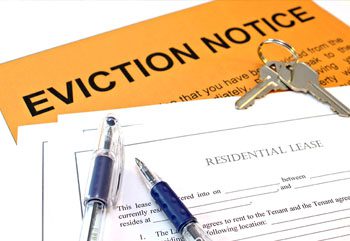LEGISLATIVE COUNSEL’S DIGEST
AB 1482, Chiu. Tenant Protection Act of 2019: tenancy: rent caps.Existing law specifies that a hiring of residential real property, for a term not specified by the parties, is deemed to be renewed at the end of the term implied by law unless one of the parties gives written notice to the other of that party’s intention to terminate. Existing law requires an owner of a residential dwelling to give notice at least 60 days prior to the proposed date of termination, or at least 30 days prior to the proposed date of termination if any tenant or resident has resided in the dwelling for less than one year, as specified. Existing law requires any notice given by an owner to be given in a prescribed manner, to contain certain information, and to be formatted, as specified.


EVICTION
START ONLINE
This bill would, with certain exceptions, prohibit an owner, as defined, of residential real property from terminating a tenancy without just cause, as defined, which the bill would require to be stated in the written notice to terminate tenancy when the tenant has continuously and lawfully occupied the residential real property for 12 months, except as provided. The bill would require, for certain just cause terminations that are curable, that the owner give a notice of violation and an opportunity to cure the violation prior to issuing the notice of termination. The bill, if the violation is not cured within the time period set forth in the notice, would authorize a 3-day notice to quit without an opportunity to cure to be served to terminate the tenancy. The bill would require, for no-fault just cause terminations, as specified, that the owner, at the owner’s option, either assist certain tenants to relocate, regardless of the tenant’s income, by providing a direct payment of one month’s rent to the tenant, as specified, or waive in writing the payment of rent for the final month of the tenancy, prior to the rent becoming due. The bill would require the actual amount of relocation assistance or rent waiver provided to a tenant that fails to vacate after the expiration of the notice to terminate the tenancy to be recoverable as damages in an action to recover possession. The bill would provide that if the owner does not provide relocation assistance, the notice of termination is void. The bill would except certain properties and circumstances from the application of its provisions. The bill would require an owner of residential property to provide prescribed notice to a tenant of the tenant’s rights under these provisions. The bill would not apply to residential real property subject to a local ordinance requiring just cause for termination adopted on or before September 1, 2019, or to residential real property subject to a local ordinance requiring just cause for termination adopted or amended after September 1, 2019, that is more protective than these provisions, as defined. The bill would void any waiver of the rights under these provisions. The bill would repeal these provisions as of January 1, 2030.Existing law governs the hiring of residential dwelling units and requires a landlord to provide specified notice to tenants prior to an increase in rent. Existing law, the Costa-Hawkins Rental Housing Act, prescribes statewide limits on the application of local rent control with regard to certain properties. That act, among other things, authorizes an owner of residential real property to establish the initial and all subsequent rental rates for a dwelling or unit that meets specified criteria, subject to certain limitations.This bill would, until January 1, 2030, prohibit an owner of residential real property from, over the course of any 12-month period, increasing the gross rental rate for a dwelling or unit more than 5% plus the percentage change in the cost of living, as defined, or 10%, whichever is lower, of the lowest gross rental rate charged for the immediately preceding 12 months, subject to specified conditions. The bill would prohibit an owner of a unit of residential real property from increasing the gross rental rate for the unit in more than 2 increments over a 12-month period, after the tenant remains in occupancy of the unit over a 12-month period. The bill would exempt certain properties from these provisions. The bill would require the Legislative Analyst’s Office to submit a report, on or before January 1, 2030, to the Legislature regarding the effectiveness of these provisions. The bill would provide that these provisions apply to all rent increases occurring on or after March 15, 2019. The bill would provide that in the event that an owner increased the rent by more than the amount specified above between March 15, 2019, and January 1, 2020, the applicable rent on January 1, 2020, shall be the rent as of March 15, 2019, plus the maximum permissible increase, and the owner shall not be liable to the tenant for any corresponding rent overpayment. The bill would authorize an owner who increased the rent by less than the amount specified above between March 15, 2019, and January 1, 2020, to increase the rent twice within 12 months of March 15, 2019, but not by more than the amount specified above. The bill would void any waiver of the rights under these provisions.The Planning and Zoning Law requires the owner of an assisted housing development in which there will be an expiration of rental restrictions to, among other things, provide notice of the proposed change to each affected tenant household residing in the assisted housing development subject to specified procedures and requirements, and to also provide specified entities notice and an opportunity to submit an offer to purchase the development prior to the expiration of the rental restrictions.This bill would authorize an owner of an assisted housing development, who demonstrates, under penalty of perjury, compliance with the provisions described above with regard to the expiration of rental restrictions, to establish the initial unassisted rental rate for units without regard to the cap on rent increases discussed above, but would require the owner to comply with the above cap on rent increases for subsequent rent increases in the development. The bill would authorize an owner of a deed-restricted affordable housing unit or an affordable housing unit subject to a regulatory restriction contained in an agreement with a government agency limiting rental rates that is not within an assisted housing development to establish the initial rental rate for the unit upon the expiration of the restriction, but would require the owner to comply with the above cap on rent increases for subsequent rent increases for the unit. The bill would repeal these provisions on January 1, 2030. The bill would void any waiver of the rights under these provisions. By requiring an owner of an assisted housing development to demonstrate compliance with specified provisions under penalty of perjury, this bill would expand the existing crime of perjury and thus would impose a state-mandated local program.The California Constitution requires the state to reimburse local agencies and school districts for certain costs mandated by the state. Statutory provisions establish procedures for making that reimbursement.This bill would provide that no reimbursement is required by this act for a specified reason.
Get In Touch
Email Us
Click
Call or Text
1-844-4LDAPRO
(916) 620-2446
Start Online
Pay Online
E-Sign Documents
In Office
Appointments Available
By Appointment Only
Digest Key
Vote: MAJORITY Appropriation: NO Fiscal Committee: YES Local Program: YES
Bill Text
The people of the State of California do enact as follows:
SECTION 1.
This act shall be known, and may be cited, as the Tenant Protection Act of 2019.
SEC. 2.
Section 1946.2 is added to the Civil Code, to read:
1946.2.
(a) Notwithstanding any other law, after a tenant has continuously and lawfully occupied a residential real property for 12 months, the owner of the residential real property shall not terminate the tenancy without just cause, which shall be stated in the written notice to terminate tenancy. If any additional adult tenants are added to the lease before an existing tenant has continuously and lawfully occupied the residential real property for 24 months, then this subdivision shall only apply if either of the following are satisfied:
(1) All of the tenants have continuously and lawfully occupied the residential real property for 12 months or more.(2) One or more tenants have continuously and lawfully occupied the residential real property for 24 months or more.(b) For purposes of this section, “just cause” includes either of the following:(1) At-fault just cause, which is any of the following:(A) Default in the payment of rent.(B) A breach of a material term of the lease, as described in paragraph (3) of Section 1161 of the Code of Civil Procedure, including, but not limited to, violation of a provision of the lease after being issued a written notice to correct the violation.(C) Maintaining, committing, or permitting the maintenance or commission of a nuisance as described in paragraph (4) of Section 1161 of the Code of Civil Procedure.(D) Committing waste as described in paragraph (4) of Section 1161 of the Code of Civil Procedure.(E) The tenant had a written lease that terminated on or after January 1, 2020, and after a written request or demand from the owner, the tenant has refused to execute a written extension or renewal of the lease for an additional term of similar duration with similar provisions, provided that those terms do not violate this section or any other provision of law.(F) Criminal activity by the tenant on the residential real property, including any common areas, or any criminal activity or criminal threat, as defined in subdivision (a) of Section 422 of the Penal Code, on or off the residential real property, that is directed at any owner or agent of the owner of the residential real property.(G) Assigning or subletting the premises in violation of the tenant’s lease, as described in paragraph (4) of Section 1161 of the Code of Civil Procedure.(H) The tenant’s refusal to allow the owner to enter the residential real property as authorized by Sections 1101.5 and 1954 of this code, and Sections 13113.7 and 17926.1 of the Health and Safety Code.(I) Using the premises for an unlawful purpose as described in paragraph (4) of Section 1161 of the Code of Civil Procedure.(J) The employee, agent, or licensee’s failure to vacate after their termination as an employee, agent, or a licensee as described in paragraph (1) of Section 1161 of the Code of Civil Procedure.(K) When the tenant fails to deliver possession of the residential real property after providing the owner written notice as provided in Section 1946 of the tenant’s intention to terminate the hiring of the real property, or makes a written offer to surrender that is accepted in writing by the landlord, but fails to deliver possession at the time specified in that written notice as described in paragraph (5) of Section 1161 of the Code of Civil Procedure.(2) No-fault just cause, which includes any of the following:(A) (i) Intent to occupy the residential real property by the owner or their spouse, domestic partner, children, grandchildren, parents, or grandparents.(ii) For leases entered into on or after July 1, 2020, clause (i) shall apply only if the tenant agrees, in writing, to the termination, or if a provision of the lease allows the owner to terminate the lease if the owner, or their spouse, domestic partner, children, grandchildren, parents, or grandparents, unilaterally decides to occupy the residential real property. Addition of a provision allowing the owner to terminate the lease as described in this clause to a new or renewed rental agreement or fixed-term lease constitutes a similar provision for the purposes of subparagraph (E) of paragraph (1).(B) Withdrawal of the residential real property from the rental market.(C) (i) The owner complying with any of the following:(I) An order issued by a government agency or court relating to habitability that necessitates vacating the residential real property.(II) An order issued by a government agency or court to vacate the residential real property.(III) A local ordinance that necessitates vacating the residential real property.(ii) If it is determined by any government agency or court that the tenant is at fault for the condition or conditions triggering the order or need to vacate under clause (i), the tenant shall not be entitled to relocation assistance as outlined in paragraph (3) of subdivision (d).(D) (i) Intent to demolish or to substantially remodel the residential real property.(ii) For purposes of this subparagraph, “substantially remodel” means the replacement or substantial modification of any structural, electrical, plumbing, or mechanical system that requires a permit from a governmental agency, or the abatement of hazardous materials, including lead-based paint, mold, or asbestos, in accordance with applicable federal, state, and local laws, that cannot be reasonably accomplished in a safe manner with the tenant in place and that requires the tenant to vacate the residential real property for at least 30 days. Cosmetic improvements alone, including painting, decorating, and minor repairs, or other work that can be performed safely without having the residential real property vacated, do not qualify as substantial rehabilitation.(c) Before an owner of residential real property issues a notice to terminate a tenancy for just cause that is a curable lease violation, the owner shall first give notice of the violation to the tenant with an opportunity to cure the violation pursuant to paragraph (3) of Section 1161 of the Code of Civil Procedure. If the violation is not cured within the time period set forth in the notice, a three-day notice to quit without an opportunity to cure may thereafter be served to terminate the tenancy.(d) (1) For a tenancy for which just cause is required to terminate the tenancy under subdivision (a), if an owner of residential real property issues a termination notice based on a no-fault just cause described in paragraph (2) of subdivision (b), the owner shall, regardless of the tenant’s income, at the owner’s option, do one of the following:(A) Assist the tenant to relocate by providing a direct payment to the tenant as described in paragraph (3).(B) Waive in writing the payment of rent for the final month of the tenancy, prior to the rent becoming due.(2) If an owner issues a notice to terminate a tenancy for no-fault just cause, the owner shall notify the tenant of the tenant’s right to relocation assistance or rent waiver pursuant to this section. If the owner elects to waive the rent for the final month of the tenancy as provided in subparagraph (B) of paragraph (1), the notice shall state the amount of rent waived and that no rent is due for the final month of the tenancy.(3) (A) The amount of relocation assistance or rent waiver shall be equal to one month of the tenant’s rent that was in effect when the owner issued the notice to terminate the tenancy. Any relocation assistance shall be provided within 15 calendar days of service of the notice.(B) If a tenant fails to vacate after the expiration of the notice to terminate the tenancy, the actual amount of any relocation assistance or rent waiver provided pursuant to this subdivision shall be recoverable as damages in an action to recover possession.(C) The relocation assistance or rent waiver required by this subdivision shall be credited against any other relocation assistance required by any other law.(4) An owner’s failure to strictly comply with this subdivision shall render the notice of termination void.(e) This section shall not apply to the following types of residential real properties or residential circumstances:(1) Transient and tourist hotel occupancy as defined in subdivision (b) of Section 1940.(2) Housing accommodations in a nonprofit hospital, religious facility, extended care facility, licensed residential care facility for the elderly, as defined in Section 1569.2 of the Health and Safety Code, or an adult residential facility, as defined in Chapter 6 of Division 6 of Title 22 of the Manual of Policies and Procedures published by the State Department of Social Services.(3) Dormitories owned and operated by an institution of higher education or a kindergarten and grades 1 to 12, inclusive, school.(4) Housing accommodations in which the tenant shares bathroom or kitchen facilities with the owner who maintains their principal residence at the residential real property.(5) Single-family owner-occupied residences, including a residence in which the owner-occupant rents or leases no more than two units or bedrooms, including, but not limited to, an accessory dwelling unit or a junior accessory dwelling unit.(6) A duplex in which the owner occupied one of the units as the owner’s principal place of residence at the beginning of the tenancy, so long as the owner continues in occupancy.(7) Housing that has been issued a certificate of occupancy within the previous 15 years.(8) Residential real property that is alienable separate from the title to any other dwelling unit, provided that both of the following apply:(A) The owner is not any of the following:(i) A real estate investment trust, as defined in Section 856 of the Internal Revenue Code.(ii) A corporation.(iii) A limited liability company in which at least one member is a corporation.
(B) (i) The tenants have been provided written notice that the residential property is exempt from this section using the following statement:
“This property is not subject to the rent limits imposed by Section 1947.12 of the Civil Code and is not subject to the just cause requirements of Section 1946.2 of the Civil Code. This property meets the requirements of Sections 1947.12 (d)(5) and 1946.2 (e)(8) of the Civil Code and the owner is not any of the following: (1) a real estate investment trust, as defined by Section 856 of the Internal Revenue Code; (2) a corporation; or (3) a limited liability company in which at least one member is a corporation.”
(ii) For a tenancy existing before July 1, 2020, the notice required under clause (i) may, but is not required to, be provided in the rental agreement.(iii) For any tenancy commenced or renewed on or after July 1, 2020, the notice required under clause (i) must be provided in the rental agreement.(iv) Addition of a provision containing the notice required under clause (i) to any new or renewed rental agreement or fixed-term lease constitutes a similar provision for the purposes of subparagraph (E) of paragraph (1) of subdivision (b).(9) Housing restricted by deed, regulatory restriction contained in an agreement with a government agency, or other recorded document as affordable housing for persons and families of very low, low, or moderate income, as defined in Section 50093 of the Health and Safety Code, or subject to an agreement that provides housing subsidies for affordable housing for persons and families of very low, low, or moderate income, as defined in Section 50093 of the Health and Safety Code or comparable federal statutes.(f) An owner of residential real property subject to this section shall provide notice to the tenant as follows:(1) For any tenancy commenced or renewed on or after July 1, 2020, as an addendum to the lease or rental agreement, or as a written notice signed by the tenant, with a copy provided to the tenant.(2) For a tenancy existing prior to July 1, 2020, by written notice to the tenant no later than August 1, 2020, or as an addendum to the lease or rental agreement.(3) The notification or lease provision shall be in no less than 12-point type, and shall include the following:
“California law limits the amount your rent can be increased. See Section 1947.12 of the Civil Code for more information. California law also provides that after all of the tenants have continuously and lawfully occupied the property for 12 months or more or at least one of the tenants has continuously and lawfully occupied the property for 24 months or more, a landlord must provide a statement of cause in any notice to terminate a tenancy. See Section 1946.2 of the Civil Code for more information.”
The provision of the notice shall be subject to Section 1632.
(g) (1) This section does not apply to the following residential real property:(A) Residential real property subject to a local ordinance requiring just cause for termination of a residential tenancy adopted on or before September 1, 2019, in which case the local ordinance shall apply.(B) Residential real property subject to a local ordinance requiring just cause for termination of a residential tenancy adopted or amended after September 1, 2019, that is more protective than this section, in which case the local ordinance shall apply. For purposes of this subparagraph, an ordinance is “more protective” if it meets all of the following criteria:(i) The just cause for termination of a residential tenancy under the local ordinance is consistent with this section.(ii) The ordinance further limits the reasons for termination of a residential tenancy, provides for higher relocation assistance amounts, or provides additional tenant protections that are not prohibited by any other provision of law.(iii) The local government has made a binding finding within their local ordinance that the ordinance is more protective than the provisions of this section.(2) A residential real property shall not be subject to both a local ordinance requiring just cause for termination of a residential tenancy and this section.(3) A local ordinance adopted after September 1, 2019, that is less protective than this section shall not be enforced unless this section is repealed.(h) Any waiver of the rights under this section shall be void as contrary to public policy.(i) For the purposes of this section, the following definitions shall apply:(1) “Owner” and “residential real property” have the same meaning as those terms are defined in Section 1954.51.(2) “Tenancy” means the lawful occupation of residential real property and includes a lease or sublease.(j) This section shall remain in effect only until January 1, 2030, and as of that date is repealed.
SEC. 3.
Section 1947.12 is added to the Civil Code, to read:
1947.12.
(a) (1) Subject to subdivision (b), an owner of residential real property shall not, over the course of any 12-month period, increase the gross rental rate for a dwelling or a unit more than 5 percent plus the percentage change in the cost of living, or 10 percent, whichever is lower, of the lowest gross rental rate charged for that dwelling or unit at any time during the 12 months prior to the effective date of the increase. In determining the lowest gross rental amount pursuant to this section, any rent discounts, incentives, concessions, or credits offered by the owner of such unit of residential real property and accepted by the tenant shall be excluded. The gross per-month rental rate and any owner-offered discounts, incentives, concessions, or credits shall be separately listed and identified in the lease or rental agreement or any amendments to an existing lease or rental agreement.
(2) If the same tenant remains in occupancy of a unit of residential real property over any 12-month period, the gross rental rate for the unit of residential real property shall not be increased in more than two increments over that 12-month period, subject to the other restrictions of this subdivision governing gross rental rate increase.(b) For a new tenancy in which no tenant from the prior tenancy remains in lawful possession of the residential real property, the owner may establish the initial rental rate not subject to subdivision (a). Subdivision (a) is only applicable to subsequent increases after that initial rental rate has been established.(c) A tenant of residential real property subject to this section shall not enter into a sublease that results in a total rent for the premises that exceeds the allowable rental rate authorized by subdivision (a). Nothing in this subdivision authorizes a tenant to sublet or assign the tenant’s interest where otherwise prohibited.(d) This section shall not apply to the following residential real properties:(1) Housing restricted by deed, regulatory restriction contained in an agreement with a government agency, or other recorded document as affordable housing for persons and families of very low, low, or moderate income, as defined in Section 50093 of the Health and Safety Code, or subject to an agreement that provides housing subsidies for affordable housing for persons and families of very low, low, or moderate income, as defined in Section 50093 of the Health and Safety Code or comparable federal statutes.(2) Dormitories constructed and maintained in connection with any higher education institution within the state for use and occupancy by students in attendance at the institution.(3) Housing subject to rent or price control through a public entity’s valid exercise of its police power consistent with Chapter 2.7 (commencing with Section 1954.50) that restricts annual increases in the rental rate to an amount less than that provided in subdivision (a).(4) Housing that has been issued a certificate of occupancy within the previous 15 years.(5) Residential real property that is alienable separate from the title to any other dwelling unit, provided that both of the following apply:(A) The owner is not any of the following:(i) A real estate investment trust, as defined in Section 856 of the Internal Revenue Code.(ii) A corporation.(iii) A limited liability company in which at least one member is a corporation.(B) (i) The tenants have been provided written notice that the residential real property is exempt from this section using the following statement:“This property is not subject to the rent limits imposed by Section 1947.12 of the Civil Code and is not subject to the just cause requirements of Section 1946.2 of the Civil Code. This property meets the requirements of Sections 1947.12 (c)(5) and 1946.2 (e)(7) of the Civil Code and the owner is not any of the following: (1) a real estate investment trust, as defined by Section 856 of the Internal Revenue Code; (2) a corporation; or (3) a limited liability company in which at least one member is a corporation.”(ii) For a tenancy existing before July 1, 2020, the notice required under clause (i) may, but is not required to, be provided in the rental agreement.(iii) For a tenancy commenced or renewed on or after July 1, 2020, the notice required under clause (i) must be provided in the rental agreement.(iv) Addition of a provision containing the notice required under clause (i) to any new or renewed rental agreement or fixed-term lease constitutes a similar provision for the purposes of subparagraph (E) of paragraph (1) of subdivision (b) of Section 1946.2.(6) A duplex in which the owner occupied one of the units as the owner’s principal place of residence at the beginning of the tenancy, so long as the owner continues in occupancy.(e) An owner shall provide notice of any increase in the rental rate, pursuant to subdivision (a), to each tenant in accordance with Section 827.(f) (1) On or before January 1, 2030, the Legislative Analyst’s Office shall report to the Legislature regarding the effectiveness of this section and Section 1947.13. The report shall include, but not be limited to, the impact of the rental rate cap pursuant to subdivision (a) on the housing market within the state.(2) The report required by paragraph (1) shall be submitted in compliance with Section 9795 of the Government Code.(g) For the purposes of this section, the following definitions shall apply:(1) “Owner” and “residential real property” shall have the same meaning as those terms are defined in Section 1954.51.(2) “Percentage change in the cost of living” means the percentage change from April 1 of the prior year to April 1 of the current year in the regional Consumer Price Index for the region where the residential real property is located, as published by the United States Bureau of Labor Statistics. If a regional index is not available, the California Consumer Price Index for All Urban Consumers for all items, as determined by the Department of Industrial Relations, shall apply.(3) “Tenancy” means the lawful occupation of residential real property and includes a lease or sublease.(h) (1) This section shall apply to all rent increases subject to subdivision (a) occurring on or after March 15, 2019. This section shall become operative January 1, 2020.(2) In the event that an owner has increased the rent by more than the amount permissible under subdivision (a) between March 15, 2019, and January 1, 2020, both of the following shall apply:(A) The applicable rent on January 1, 2020, shall be the rent as of March 15, 2019, plus the maximum permissible increase under subdivision (a).(B) An owner shall not be liable to the tenant for any corresponding rent overpayment.(3) An owner of residential real property subject to subdivision (a) who increased the rental rate on that residential real property on or after March 15, 2019, but prior to January 1, 2020, by an amount less than the rental rate increase permitted by subdivision (a) shall be allowed to increase the rental rate twice, as provided in paragraph (2) of subdivision (a), within 12 months of March 15, 2019, but in no event shall that rental rate increase exceed the maximum rental rate increase permitted by subdivision (a).(i) Any waiver of the rights under this section shall be void as contrary to public policy.(j) This section shall remain in effect until January 1, 2030, and as of that date is repealed.(k) (1) The Legislature finds and declares that the unique circumstances of the current housing crisis require a statewide response to address rent gouging by establishing statewide limitations on gross rental rate increases.(2) It is the intent of the Legislature that this section should apply only for the limited time needed to address the current statewide housing crisis, as described in paragraph (1). This section is not intended to expand or limit the authority of local governments to establish local policies regulating rents consistent with Chapter 2.7 (commencing with Section 1954.50), nor is it a statement regarding the appropriate, allowable rental rate increase when a local government adopts a policy regulating rent that is otherwise consistent with Chapter 2.7 (commencing with Section 1954.50).(3) Nothing in this section authorizes a local government to establish limitations on any rental rate increases not otherwise permissible under Chapter 2.7 (commencing with Section 1954.50), or affects the existing authority of a local government to adopt or maintain rent controls or price controls consistent with that chapter.
SEC. 4.
Section 1947.13 is added to the Civil Code, to read:
1947.13.
(a) Notwithstanding Section 1947.12, upon the expiration of rental restrictions, the following shall apply:
(1) The owner of an assisted housing development who demonstrates, under penalty of perjury, compliance with all applicable provisions of Sections 65863.10, 65863.11, and 65863.13 of the Government Code and any other applicable law or regulation intended to promote the preservation of assisted housing, may establish the initial unassisted rental rate for units in the applicable housing development. Any subsequent rent increase in the development shall be subject to Section 1947.12.(2) The owner of a deed-restricted affordable housing unit or an affordable housing unit subject to a regulatory restriction contained in an agreement with a government agency limiting rental rates that is not within an assisted housing development may establish the initial rental rate for the unit upon the expiration of the restriction. Any subsequent rent increase for the unit shall be subject to Section 1947.12.(b) For purposes of this section:(1) “Assisted housing development” has the same meaning as defined in paragraph (3) of subdivision (a) of Section 65863.10 of the Government Code.(2) “Expiration of rental restrictions” has the same meaning as defined in paragraph (5) of subdivision (a) of Section 65863.10 of the Government Code.(c) This section shall remain in effect until January 1, 2030, and as of that date is repealed.(d) Any waiver of the rights under this section shall be void as contrary to public policy.
SEC. 5.
No reimbursement is required by this act pursuant to Section 6 of Article XIII B of the California Constitution because the only costs that may be incurred by a local agency or school district will be incurred because this act creates a new crime or infraction, eliminates a crime or infraction, or changes the penalty for a crime or infraction, within the meaning of Section 17556 of the Government Code, or changes the definition of a crime within the meaning of Section 6 of Article XIII B of the California Constitution.
![]()
![]()
